25 Most Influential Books in Earth Sciences/Geosciences 2010–2020

“Earth sciences” and “geosciences” are pretty much two ways of referring to the same academic discipline. Historically, the field has its roots in geology, that is, the study of the earth and especially of its crust—the part of the earth that is accessible to direct empirical inspection. Today’s discipline of earth sciences/geosciences expands well beyond geology to include the study of the atmosphere, the hydrosphere (the earth’s lakes, rivers, and oceans), and even aspects of the biosphere, insofar as life has interacted with and changed the character of the inorganic realms.
The consequence is an encompassing discipline composed from a wide range of other scientific sub-disciplines such as plant sciences, environmental science, paleontology, and the burgeoning field of “earth and planetary sciences,” which encompasses the study of other earth-like objects in the solar system. Therefore, the list below includes works falling under these and other closely related sub-disciplines.
With all this in mind, we have compiled a list of the most influential books in earth sciences/geosciences of the past decade (2010–2020). We have assigned an objective measure of “influence” to each book on the basis of the number of references it has received in both the academic literature and the popular media.
Note that our list does not necessarily represent the most popular earth sciences/geosciences books overall published during the past ten years, nor is it a list of earth sciences/geosciences bestsellers during that time frame—for several reasons.
For one thing, we have excluded technical reference works, as well as sacred texts and all but the most influential fictional works which may contain material related to earth sciences/geosciences.
Many of the works on this list are quite old. Nevertheless, ours is not a list of the most influential earth sciences/geosciences books of all time, either. That list would have a very different look and feel to it.
Rather, our list provides you with the 25 books in the field of earth sciences/geosciences that have had the greatest combined academic and popular impact over the past decade.
If you’re interested in dedicating your college education to these and other essential history texts, check out The Best Colleges & Universities for a Bachelor’s in Earth Sciences.
If you would like to learn more about what career options look like after finishing an Earth sciences degree, check out careers in Earth sciences.
Otherwise, read on for a look at The 25 Most Influential Books in Earth Sciences/Geosciences.
25 Most Influential Books in Earth Sciences/Geosciences
Under the search term “Earth Sciences”
1.Merchants of Doubt: How a Handful of Scientists Obscured the Truth on Issues from Tobacco Smoke to Climate Change
By: Naomi Oreskes and Erik M. Conway , 2010
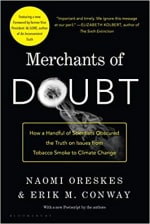

The authors are historians of science, who are known mainly for this bestselling popular work. Their highly influential book presents several public controversies concerning the scientific basis for public policy, from the link between cigarette smoking and cancer, to military strategy, to acid rain, to the ozone layer of the atmosphere, to global warming. The book examines the public record regarding each of these disputes in detail. In each case, the authors frame the events in similar terms as a reigning scientific consensus subverted by corrupt scientists intentionally advancing fraudulent empirical claims in order to serve commercial or ideological interests. This hugely influential book has become required reading on many college campuses in the US today.
2.Journey to the Center of the Earth
By: Jules Verne , 1864
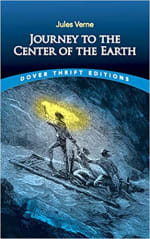

Jules Verne is, of course, the prescient French author of many works of classic speculative fiction. This work, one of his most popular, recounts an expedition of geologists who enter the earth’s crust through an extinct volcano in Iceland and wend their way down to a prehistoric world that has survived at the earth’s core, encountering a variety of diverting adventures along the way. The book highlights the geological interests of its protagonists, instilling in the reader a sense of wonder at the stunning crystalline and other subterranean formations described. Originally published as Voyage au centre de la terre, an expanded edition was released in 1867. It was first translated into English in 1871. A very large number of editions exist, of which the one referenced here is one of the most recent.
3.Wonderful Life: The Burgess Shale and the Nature of History
By: Stephen Jay Gould , 1989
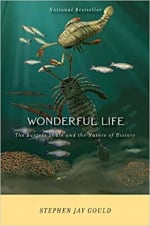

Like all his books, this volume by celebrity Harvard paleontologist Stephen Jay Gould (1941–2002) is an entertaining read that is quite accessible to a popular audience. At the same time, it is a philosophical intervention in the struggle to update the Modern Synthesis of Darwinian evolutionary theory in the light of a more realistic interpretation of the fossil record. In 1972, Gould (writing with Ian Tattersall) published a famous paper arguing that Darwinian gradualism is empirically false. In its place, Gould advanced the idea of “punctuated equilibria,” meaning that most species survive unchanged for long periods of time, and then undergo change during a relatively short period. In the present work, Gould presents a fascinating case study that he believes proves the evolutionary process is essentially “contingent.” This claim is based on work by Charles Doolittle Walcott (1850–1927), who unearthed fossils in the “Burgess Shale” in the Canadian Rockies, beginning in 1909 and continuing for decades (after Walcott’s death, his work was continued by his children). The Burgess Shale reveals a myriad of sometimes fantastic biological forms (at the phylum level) which proliferated around 500 million years ago (the “Cambrian Explosion”). Gould argues that it was a matter of chance which of these phyla survived and which went extinct. His book was reprinted in 2007.
4.Agenda 21: Earth Summit: The United Nations Programme of Action from Rio
By: United Nations Division for Sustainable Development, 2013
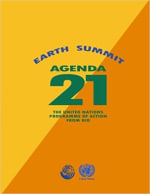

“Agenda 21” is an action program for global sustainable development for the twenty-first century. “Earth Summit” is the colloquial name for the original UN Conference on Environment and Development (UNCED), which was held in Rio de Janeiro in 1992. Agenda 21 is thus the principal product of the Earth Summit. As such, it provides a non-binding action plan for the United Nations and other international, non-governmental organizations, as well as individual governments around the world. Its many recommendations—which include suggested actions regarding the oceans, the atmosphere, biodiversity, hazardous waste, GMOs, and a multitude of other issues—are intended to be implemented at the local, the national, and the global levels.
5.Basic Paleontology
By: Michael Benton and David Harper , 1997
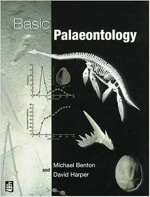

This is the most influential undergraduate-level textbook in the field of paleontology—a field that covers topics from a number of adjacent disciplines, including above all geology, botany, zoology, and evolutionary theory. The text is lavishly illustrated, yet authoritatively written. The book is structured according to the sweeping panorama of the history of life. As a result, a lot of attention is paid to marine invertebrate paleontology, as well as to theoretical issues such as macroevolution and mass extinction events. Also covered are fundamental methodological issues, including biostratigraphy. This is a must-read for all students with a serious interest in fossils and the history of life on earth.
6.The Structure and Distribution of Coral Reefs
By: Charles Darwin , 1842
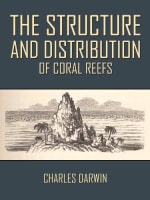

Charles Darwin (1809–1882) served as ship’s naturalist on board H.M.S. Beagle, which circumnavigated the globe between 1831 and 1836. Its primary scientific mission was to explore the geology, flora, and fauna of the Atlantic and Pacific coasts of South America, the Falkland Islands, and Tierra del Fuego. However, the ship also touched land at Auckland, Sydney, the Keeling (now Cocos) Islands, Mauritius, Cape Town, the Cape Verde Islands, and elsewhere. Out of the voluminous material Darwin gathered from this expedition, he crafted several books and scholarly monographs which were published in the years following his return home. The present volume was the first and one of the most important of these, helping to establish its author’s scholarly reputation, and so preparing the scientific community to accept his theory of evolution by means of natural selection with the publication of the Origin of Species in 1859. In the present work, Darwin advanced his theory—which first occurred to him in South America, but was later corroborated by first-hand observation in the Keeling Islands—that the different kinds of coral reefs and atolls could all be explained by means of a single mechanism of uplift and subsidence of the earth’s crust at the ocean floor.
7.Our Common Future
By: World Commission on Environment and Development, 1987


The World Commission on Environment and Development (WCED) was created by the UN General Assembly in 1983. The original WCED was a 22-member committee, chaired by former Norwegian Prime Minister Gro Harlem Brundtland, which was tasked with drawing up realistic proposals for solving problems connected with the intersection between third-world economic development and the ecology. This book was the result of that committee’s work. It includes discussion of a wide variety of issues, from ecosystems to energy sources to urbanization, and ends with specific suggestions for institutional and legal change.
8.The Hockey Stick and the Climate Wars: Dispatches from the Front Lines
By: Michael E. Mann , 2012
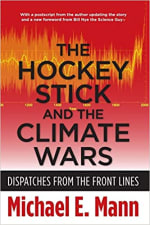

Michael E. Mann is a geophysicist, climatologist, and Director of the Earth System Science Center at Pennsylvania State University. The term “hockey stick” refers to a graph that appeared in a scientific article Mann published in 1999 with two co-authors. The graph, which shows the earth’s mean temperature over the past millennium, is essentially flat until around 1900, when it shoots upward at a very steep angle. Thus, if one turns the graph on its side, it resembles a hockey stick, with a long straight handle and a short blade set at nearly a right angle to the handle. Mann’s “hockey stick” graph has become a vivid symbol of the mainstream view that the recent warming of the earth is largely due to human activity—namely, the greenhouse effect caused by the burning of fossil fuels. In this book, which is essentially a memoir, Mann recounts the story of his famous graph and its scientific and political consequences.
9.Meteorology
By: Aristotle , c. 350 BC
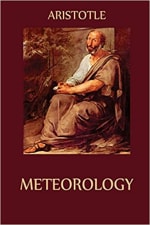

The Meteorology (in Greek, Meteōrologika) is one of the shorter physical treatises of Aristotle (384—322 BC). It focuses on the phenomena associated with the “upper atmosphere” (ta meteōra), including such things as rain, thunderstorms, lightning, tornadoes, meteors, and comets (which Aristotle mistakenly believed are found in the upper atmosphere). The treatise also extends to the consequences of meteorological phenomena, such as the erosion of land caused by rivers and oceans. While many of his claims are factually mistaken, his approach is rigorously empirical throughout. It is also interesting to note that Aristotle took it for granted that the earth is spherical, belying the oft-repeated canard that the ancients thought the earth is flat.
10.Geological Evidences of the Antiquity of Man
By: Charles Lyell , 1863
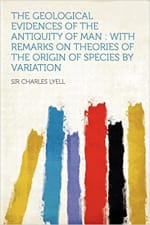

Lyell (1797–1875) was a pioneering British geologist whose Principles of Geology, originally published in 1838, presented evidence in favor of the uniformitarian theory of the history of the earth. That book had a profound influence on the young Charles Darwin after his return home from circumnavigating the globe on board H.M.S. Beagle (see #6 above). This later work by Lyell dealt in detail with Darwin’s theory of evolution by natural selection, which, in 1859, had been published in the Origin of Species. Specifically, the Antiquity of Man deals with the paleontological evidence supporting the antiquity of Homo sapiens and the reality of ice ages, as well as endorsing Darwin’s theory. With this book, Lyell (pronounced “Lyle”) in effect acknowledged Darwin, who was 12 years his junior, as his master in geological science. A revised edition of the book appeared in 1873. In the years since, it has been reprinted several times, most recently in 2019.
11.Natural History
By: Pliny the Elder , 77 AD
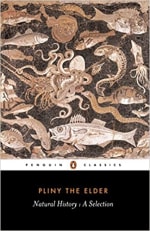

Gaius Plinius Secundus (23–79 AD) is known to posterity as Pliny the Elder to distinguish him from his even more famous nephew, the author Pliny the Younger (61–c. 113 AD). The older man was a Roman military commander, historian, and naturalist whose greatest work, a 20-volume Bella Germaniae (German Wars), is unfortunately lost. The Natural History (Naturalis Historia), which has survived in its entirety, is an enormous, encyclopedic work in 37 books. In it, Pliny aspired to cover the entire range of the ancient world’s knowledge of nature. The main subject areas dealt with in this work are astronomy and metrology, the geography and ethnography of the known world, physical anthropology and physiology, zoology, botany, materia medica, and minerals and mining. Pliny the Elder died in the eruption of Mt. Vesuvius in 79 AD, a dramatic event recorded in one of his nephew’s widely admired letters. The unabridged Natural History was published in an English translation in 10 volumes by the Loeb Classical Library during the late 1930s. The link here is to a selection from the vast original work first published in 1991.
12.An Inconvenient Truth: The Planetary Emergency of Global Warming and What We Can Do About It
By: Al Gore , 2006
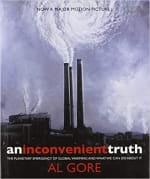

This book is a spin-off from former US Vice President Gore’s highly successful documentary film, An Inconvenient Truth (2006). Both the film and the book derived from a lecture tour that Gore had previously developed on the global warming phenomenon. As is well known, Gore shared the 2007 Nobel Peace Prize with the Intergovernmental Panel on Climate Change (see #21 below) for his work in publicizing the scientific consensus concerning the anthropogenic cause of global warming (for more details, see #8 above). The book’s importance is largely tied to its documentation of one of the most influential documentary films of the past generation.
13.Silent Spring
By: Rachel Carson , 1962


This book by marine biologist, conservationist, and author Rachel Carson (1907–1964) was one of the first books of public policy advocacy in the realm of the environment, bringing conservationist and wider environmental concerns to the attention of the general reading public for the first time. It remains one of the most successful and influential such works to this day. The principal focus of the book is on the adverse effects of widespread pesticide use on the human and animal populations, including songbirds. Carson already had an established reputation for such works of poetic conservation-consciousness-raising as her 1951 bestseller The Sea Around Us and others. However, Silent Spring represented a new departure for the author, especially for its willingness to confront the chemical industry head-on. In response, pesticide manufacturers mounted a full-frontal assault on the book, but Carson’s scientific expertise and her care with her facts eventually led to the banning of DDT, the most dangerous pesticide in use at the time. A Fortieth-Anniversary Edition of Silent Spring was published in 2002.
14.Geography
By: Strabo, c. 23 AD


Strabo (c. 64 BC–c. 24 AD) worked on his Geography (Geōgraphica) for most of his adult life, so the date of the work is hard to pin down. The latest datable event mentioned in the work occurs a year or so before his death at the age of 80. The Geography is an encyclopedic work of geographical description in 17 books. Strabo traveled extensively in his youth, so that much of the contents of the work is taken from testimony that he heard first-hand. The finished work covers the people and places from throughout the known world of his day, from the “Pillars of Hercules” (the “Strait of Gibraltar”) to India and beyond. Strabo’s masterpiece was not very well known in Antiquity, but it became highly influential in the Eastern Roman Empire (Byzantium) and in the west at the time of the Renaissance. The work was first translated into Latin in 1469—in time for Christopher Columbus to use it for guidance on his westward voyages in search of a shorter route to East Asia. It was first translated into English in the Loeb Classical Library during the early twentieth century.
15.The Map That Changed the World: William Smith and the Birth of Modern Geology
By: Simon Winchester , 2009


William Smith (1769–1839) was an English geologist who in 1815 published a detailed topographic map of much of Great Britain—the first such map for any country. Smith’s story is also fascinating from a personal-interest point of view. The son of a blacksmith, he first became interested in geology while working as a canal-digger, in which capacity he noticed that the strata visible in the rocks bore distinctive kinds of fossils. He realized that this would potentially allow strata from different regions to be linked up. On the basis of these observations, which he reported in various early scientific works, he became widely known as “Strata” Smith. He also invented the standard form of representation of the three-dimensional relationship between landscape and stratigraphy by means of a figure now known as a “block diagram,” which is widely used in geology textbooks to this day. Winchester’s book is a charming and highly readable presentation of the man, Smith, as well as his influential work—which has even earned him the sobriquet, “father of English geology.”
16.Earth in the Balance: Ecology and the Human Spirit
By: Al Gore , 1992
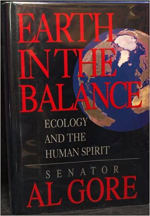

This book was published just before its author was elected Vice President of the US. It is in many ways a first draft of the Inconvenient Truth lectures series/film/book (see #12 above). This book presents the facts pertaining to the claim of anthropogenic global warming, focusing on the issue of whether to reduce greenhouse gas emissions or simply adapt to a warming planet. Gore comes down heavily on the side of curtailing fossil fuel use. Earth in the Balance was republished in 2006 to capitalize on the tremendous success of Gore’s film An Inconvenient Truth.
17.A Scientist at the Seashore
By: James Trefil , 1984
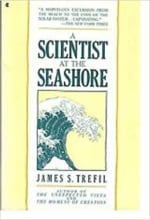

The author of this book is Professor of Physics at the University of Virginia and Robinson Professor of Physics at George Mason University, as well as a highly prolific author or co-author of nearly three dozen books. His books are divided between those that explain technical scientific achievements to a popular audience and those that explain the physical underpinnings of ordinary natural phenomena in a winning and readable style. This book, which falls into the latter category, explains such things as why the sea is salty, why and how waves are generated, what bubbles are, and other fascinating features of the world’s oceans and seashores.
18.Protogaea
By: Gottfried Wilhelm Leibniz , c. 1693


Gottfried Wilhelm Leibniz (1646–1716) was a remarkable German polymath who was a pioneer in a wide variety of academic disciplines, from mathematics to physics to philosophy to history. He was involved in a bitter priority dispute with Isaac Newton over the invention of differential calculus and is famous for his thesis that the world we live in is the “best of all possible worlds” (with emphasis on the word “possible”), which was scathingly (if unfairly) satirized by Voltaire in his 1759 novel Candide. Leibniz composed his work on geology—whose full title is Protogaea, oder Abhandlung von der ersten Gestalt der Erde und den Spuren der Historie in Denkmalen der Natur (The Primitive Earth, or Treatise on the Original Form of the Earth and the Traces of History in the Monuments of Nature)—around 1693, but it remained unpublished during his lifetime. The work was posthumously published in 1749. Protogaea is a speculative reconstruction of the history of the earth based on René Descartes’s mechanical philosophy. Leibniz also endorsed Nicolas Steno’s claim that fossils are the buried remains of living organisms, and not formations that grow within the earth. The first English translation of this classic work was published in 2008.
19.Why We Disagree About Climate Change: Understanding Controversy, Inaction and Opportunity
By: Mike Hulme, 2009
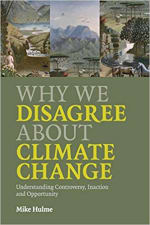

Michael Hulme (b. 1960) is currently Professor of Human Geography in the Department of Geography at the University of Cambridge. He was formerly Professor of Climate and Culture at King’s College London and of Climate Change in the School of Environmental Sciences at the University of East Anglia’s famous Climate Research Unit. In this book, Hulme goes beyond the usual boundaries of the manmade global warming debate to argue that the current environmental crisis (as he sees it) is a golden opportunity to force humanity to rethink its entire philosophical understanding of the relationship between humanity and the rest of nature.
20.Worlds in Collision
By: Immanuel Velikovsky , 1950
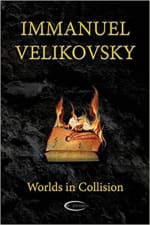

Immanuel Velikovsky (1895–1979) was born in Vitebsk in the Russian Empire to a Lithuanian-Jewish family. He trained as a physician in Russia, France, and Scotland. Later, he qualified as a psychiatrist. He relocated to the British Mandate of Palestine in 1924, where he became involved in the development of the Hebrew University of Jerusalem. In 1939, he emigrated with his family to the US. After publishing a number of scientific papers in the medical field, he began to take an interest in the ties between geology, ancient history, and planetary science. Specifically, in his bestseller Worlds in Collision and in several follow-up books, Velikovsky looked closely at ancient literary sources, including the Bible, as well as comparative mythology, to mount an argument maintaining that the ancient world underwent massive social disruptions due to the effects of close contacts between the earth and other planets of the solar system, especially Venus and Mars. In other words, his book was a modern contribution to the traditional geological theoretical framework known as “catastrophism” (as opposed to “gradualism”). Widely denounced by geologists and others during his lifetime, Velikovsky and his version of catastrophism are rejected by almost all contemporary scientists. This book has been reprinted numerous times, most recently in 2009.
Under the search term “Geosciences”
21.Renewable Energy Sources and Climate Change Mitigation
By: Intergovernmental Panel on Climate Change, 2012
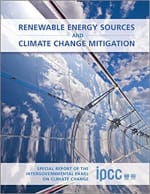

The Intergovernmental Panel on Climate Change (IPCC) is an international intergovernmental agency established by the United Nations in 1988. Its remit is to provide objective information relevant to the scientific understanding of human-induced climate change along many different dimensions, including risk assessment, possibilities for mitigation, and natural, political, and economic impacts of various policy choices. The IPCC has issued five Assessment Reports to date, most recently in 2014, with a sixth report due out in 2022. In addition, it has released a number of special reports, including this one, officially titled the “Special Report on Renewable Energy Sources and Climate Change Mitigation” (SRREN), published in 2012. SSREN discusses the six most significant renewable energy technologies mediating the transition to a sustainable global economy. It also covers the environmental and social consequences and economic costs of such technologies, as well as various obstacles to their development and implementation. In 2007 the IPCC was awarded the Nobel Peace Prize along with former US Vice President Al Gore (see #12 above).
22.Vestiges of the Natural History of Creation
By: Robert Chambers , 1844
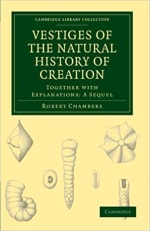

The intellectual situation in the early nineteenth century regarding the evolution of life on earth was far more complex than is commonly realized. Everyone knows that Charles Darwin transformed the intellectual landscape in 1859 with his book, Origin of Species, by proposing a specific mechanism (natural selection) by means of which evolution might occur—where “evolution” is to be understood in the sense of the common descent and transformation over time of contemporary complex life forms from one or a few much simpler, original forms. However, Darwin was by no means the first person to maintain that evolution is a fact. Several earlier thinkers, notably the great French zoologist, Jean-Baptiste Lamarck (1744–1829)—not to mention Darwin’s own grandfather, the physician and poet, Erasmus Darwin (1731–1802)—believed in evolution in this sense. Indeed, the book that first put the idea of evolution firmly on the intellectual map for the English-speaking reading public was this work, The Vestiges of the Natural History of Creation, which appeared in 1844. The book was published anonymously, but its author was Robert Chambers (1802–1871), a publisher, amateur geologist, and Fellow of the Geological Society of London. The book outlined a strikingly modern view of the geological history of the earth, culminating in a forthright evolutionary interpretation of fossils. For a time, it was a great succès de scandale, providing titillating talk for all of London polite society. A minor industry sprang up around guessing the identity of the author. While Chambers’s name was mooted, he chose not to acknowledge authorship of the Vestiges during his lifetime.
23.The Exploration of the Colorado River and Its Canyons
By: John Wesley Powell , 1875
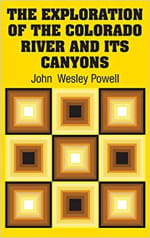

John Wesley Powell (1834–1902) served as a major in the US Army during the American Civil War. After the war, he taught as a Professor of Geology at Illinois State Normal University and later served as Curator of the Museum of the Illinois State Natural History Society. In 1881 he was appointed Director of the US Geological Survey. Powell personally led several geological expeditions to the American southwest. In 1869 he set out from Green River, Wyoming, with nine men, four boats, and 10 months’ worth of supplies. Following the Green River southward to its confluence with the Colorado River in Utah, the little group continued downriver to Arizona, passing through the Grand Canyon to the Gulf of California. The memoir of this and three subsequent expeditions is a classic work of scientific exploration and human adventure, which was first published in Scribner’s Monthly magazine in 1875, and released thereafter in book form. It has been reprinted many times.
24.Omphalos: An Attempt to Untie the Geological Knot
By: Philip Henry Gosse , 1857
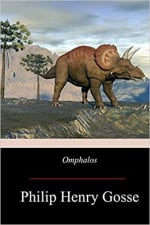

Philip Henry Gosse (1810–1888) was a self-taught naturalist and marine biologist, who in 1853 created and stocked the first public aquarium at the London Zoo. The following year he published a book which helped to spark a nation-wide craze for home aquariums among the British public. In literary circles, he is best known as the father of Edmund Gosse (1849–1928), a prominent British poet, critic, and author of the classic memoir, Father and Son (1907). With respect to his own work, Gosse père is primarily known today for one book: Omphalos. Published in 1857—two years before Darwin’s Origin of Species—Omphalos represented an attempt to reconcile the fossil record with the Christian faith. The word “omphalos” is Greek for “navel.” Gosse’s idea was that, just as the first human beings, Adam and Eve, were born with navels as a symbol of the process of natural birth, so too was the earth endowed by God at the creation (some 6000 years ago) with fossils which seemed to be ancestral to present-day life forms as a symbol of a virtual evolutionary process that never really happened. Omphalos suffered the misfortune of becoming outdated only two years after its publication by the appearance of Darwin’s Origin of Species. As a result, it fell from view for many years. However, the book has been reprinted several times during the past two decades as an indelible part of the history of the modern geological and evolutionary point of view.
25.On the Nature of Fossils
By: Georgius Agricola , 1546


Georgius Agricola was born Georg Pawer (1494–1555). “Pawer” was a dialectical variant of “Bauer,” which in German means “farmer,” which is why he signed his Latin-language scholarly works with the Latin equivalent, “Agricola.” Born in a small town in Saxony, Agricola received a humanist education, but also took a special interest in the mining operations practiced extensively in his home region. He published over 40 scholarly works on diverse subjects from geology, mineralogy, and pharmacology to history, philosophy, and poetry. His most famous work was De re metallica (On Metals), published posthumously in 12 volumes in 1556. The earlier work under consideration here—De natura fossilium, in Latin—is the first attempt to construct a systematic categorization scheme for rocks, minerals, and fossils based on their shapes and other properties. In view of its contents, the book’s title is sometimes rendered in English as Textbook of Mineralogy. In his scientific works, Agricola writes as a learned Renaissance scholar who takes Pliny’s Natural History (see #11 above) as his point of departure. On the Nature of Fossils was reprinted in an expanded, posthumous edition in 1558. It was first translated into English in 1955 and was reprinted in 2004.
***Now that you know what books to check out, consider a deep dive with a look at The Best Colleges & Universities for a Bachelor’s in Earth Sciences.
Visit our Study Guide Headquarters for tips, tools, and much more.
See our Resources Guide for much more on studying, starting your job search, and more.